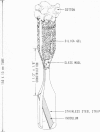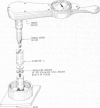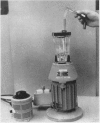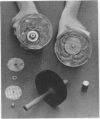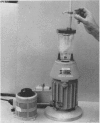Abstract
The dry-heat resistance of Bacillus subtilis var. niger spores located in or on various materials was determined as D and z values in the range of 105 through 160 C. The systems tested included spores located on steel and paper strips, spores located between stainless-steel washers mated together under 150 inch-lb and 12 inch-lb of torque, and spores encapsulated in methylmethacrylate and epoxy plastics. D values for a given temperature varied with the test system. High D values were observed for the systems in which spores were encapsulated or under heavy torque, whereas lower D values were observed for the steel and paper strip systems and the lightly torqued system. Similar z values were obtained for the plastic and steel strip systems (zD = 21 C), but an unusually low z for spores on paper (zD = 12.9 C) and an unusually high z for spores on steel washers mated at 150 inch-lb of torque (zD = 32 C) were observed. The effect of spore moisture content on the D value of spores encapsulated in water-impermeable plastic was determined, and maximal resistance was observed for spores with a water activity (aw) of 0.2 to 0.4. Significantly decreased D values were observed for spores with moisture contents below aw 0.2 or above aw 0.4. The data indicate that the important factors to be considered when measuring the dry heat resistance of spores are (i) the initial moisture content of the spore, (ii) the rate of spore desiccation during heating, (iii) the water retention capacity of the material in or on which spores are located, and (iv) the relative humidity of the system at the test temperature.
Full text
PDF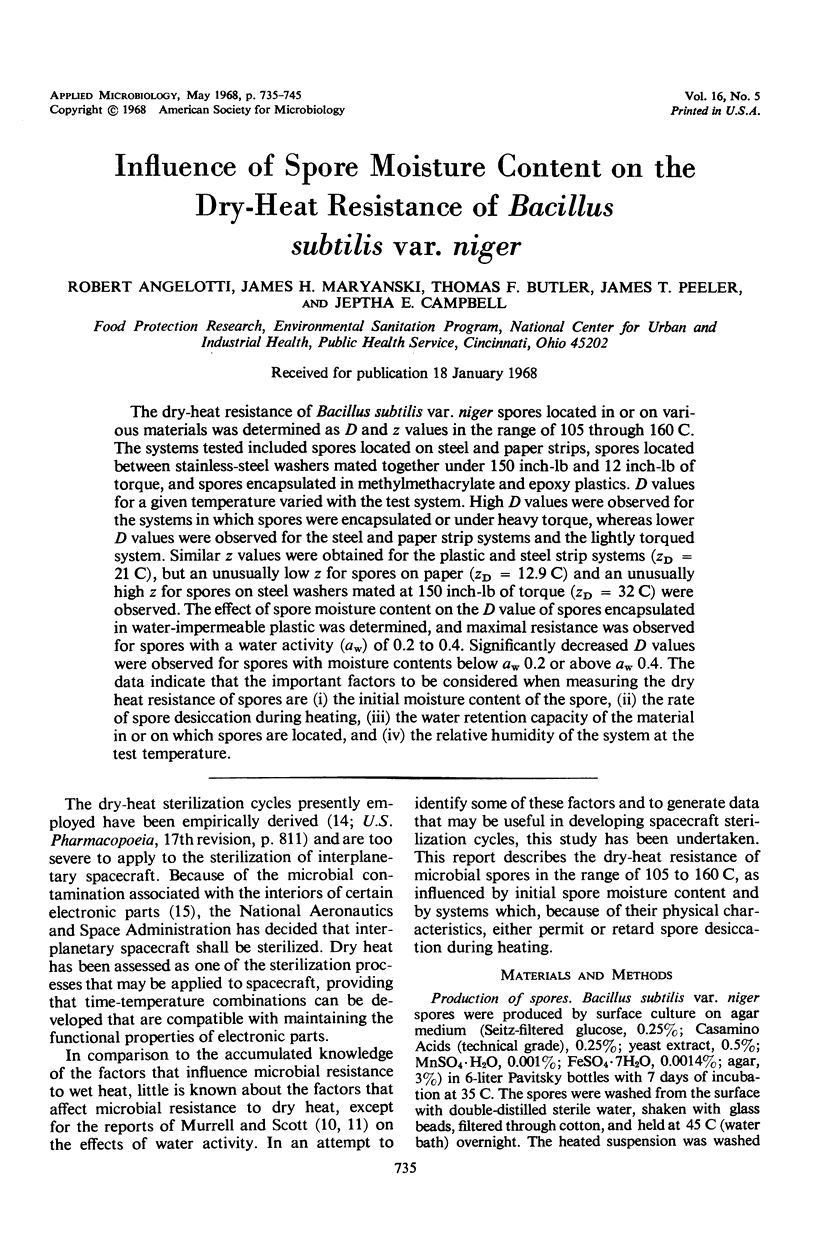

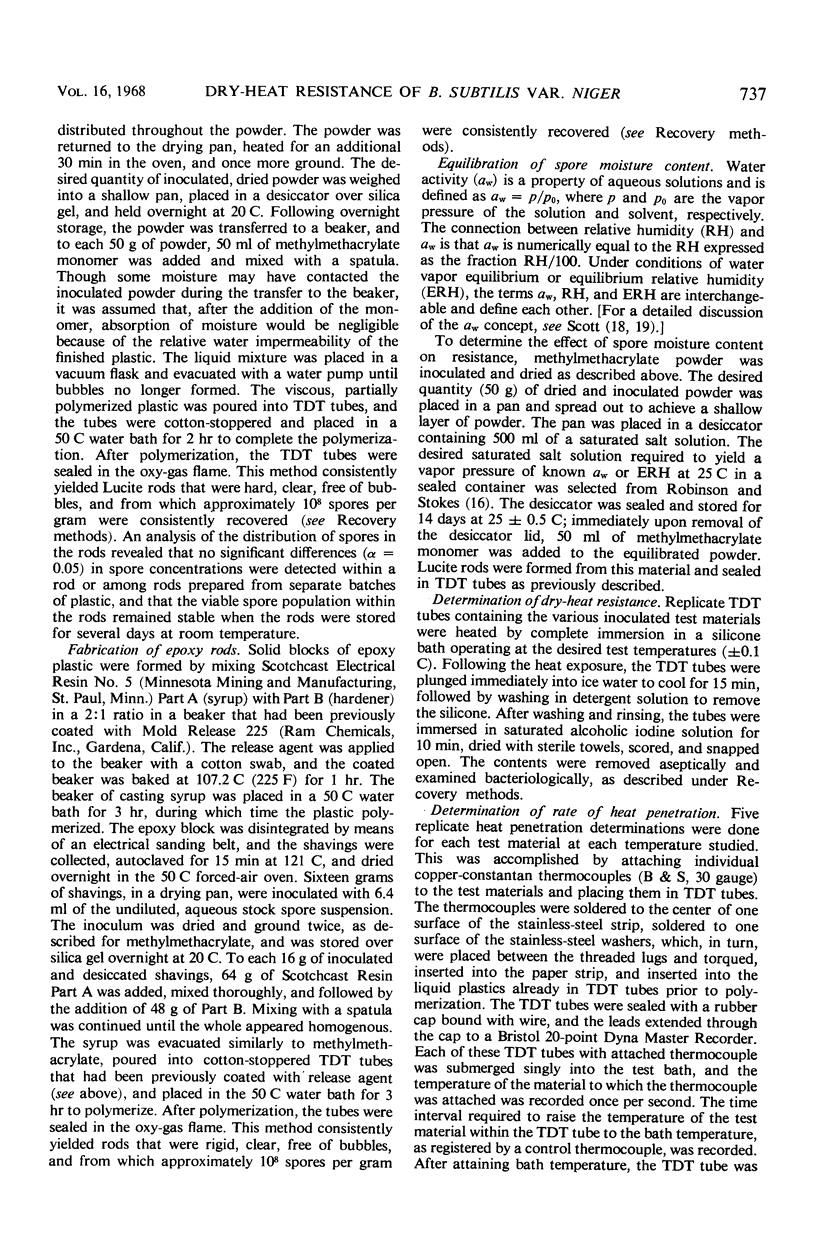
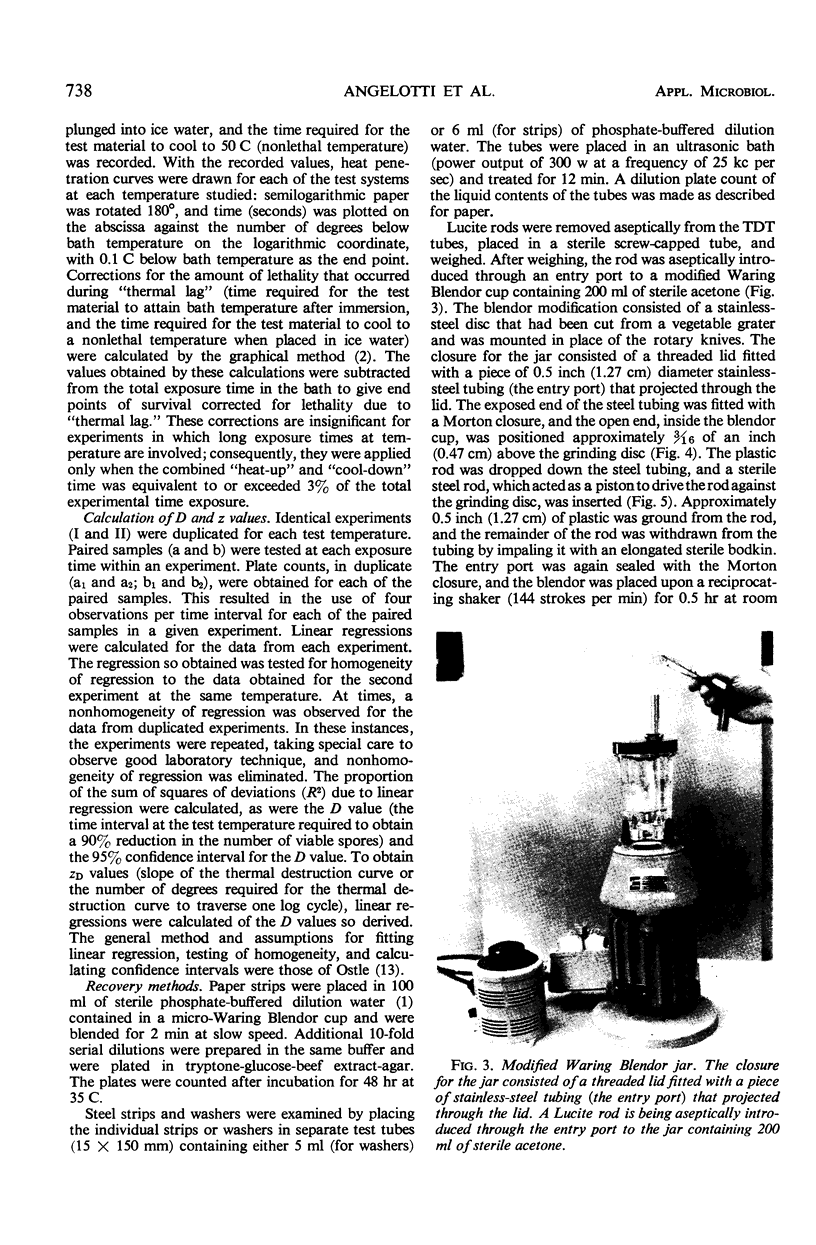
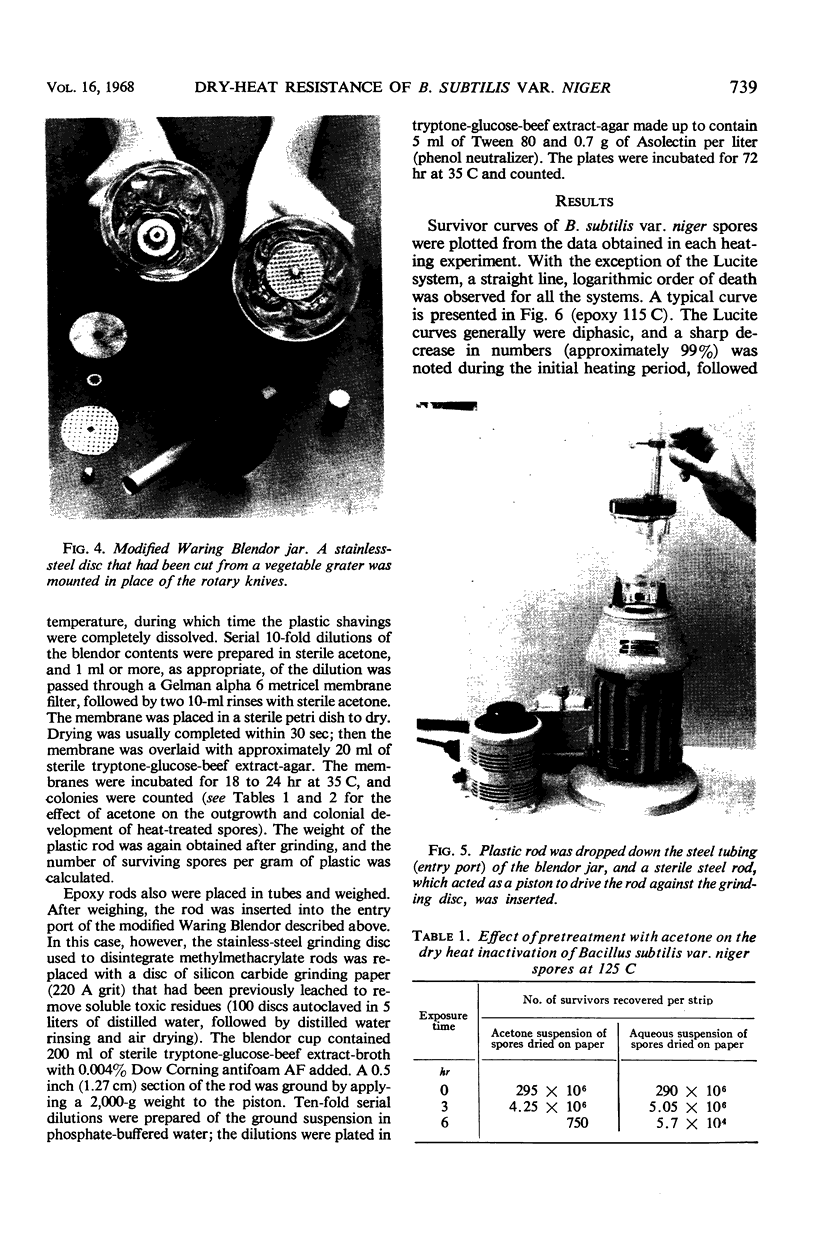
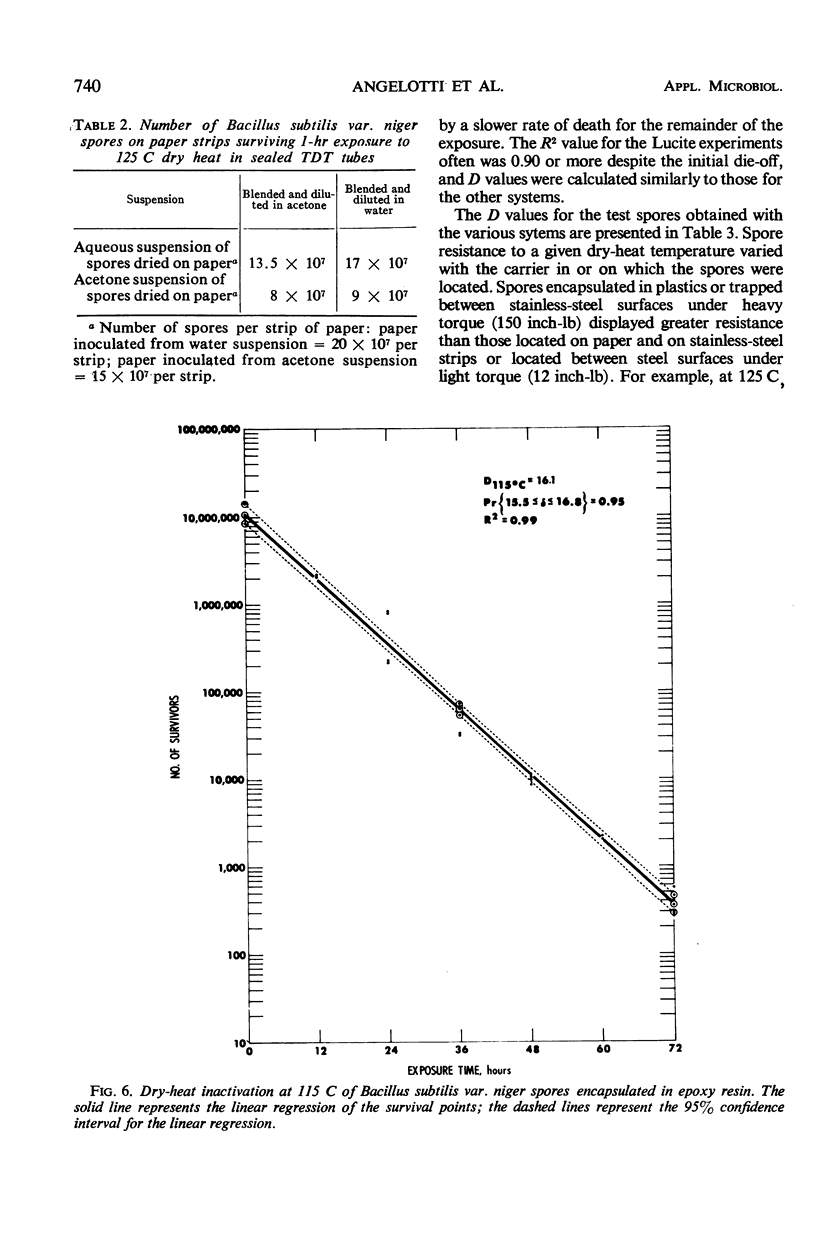
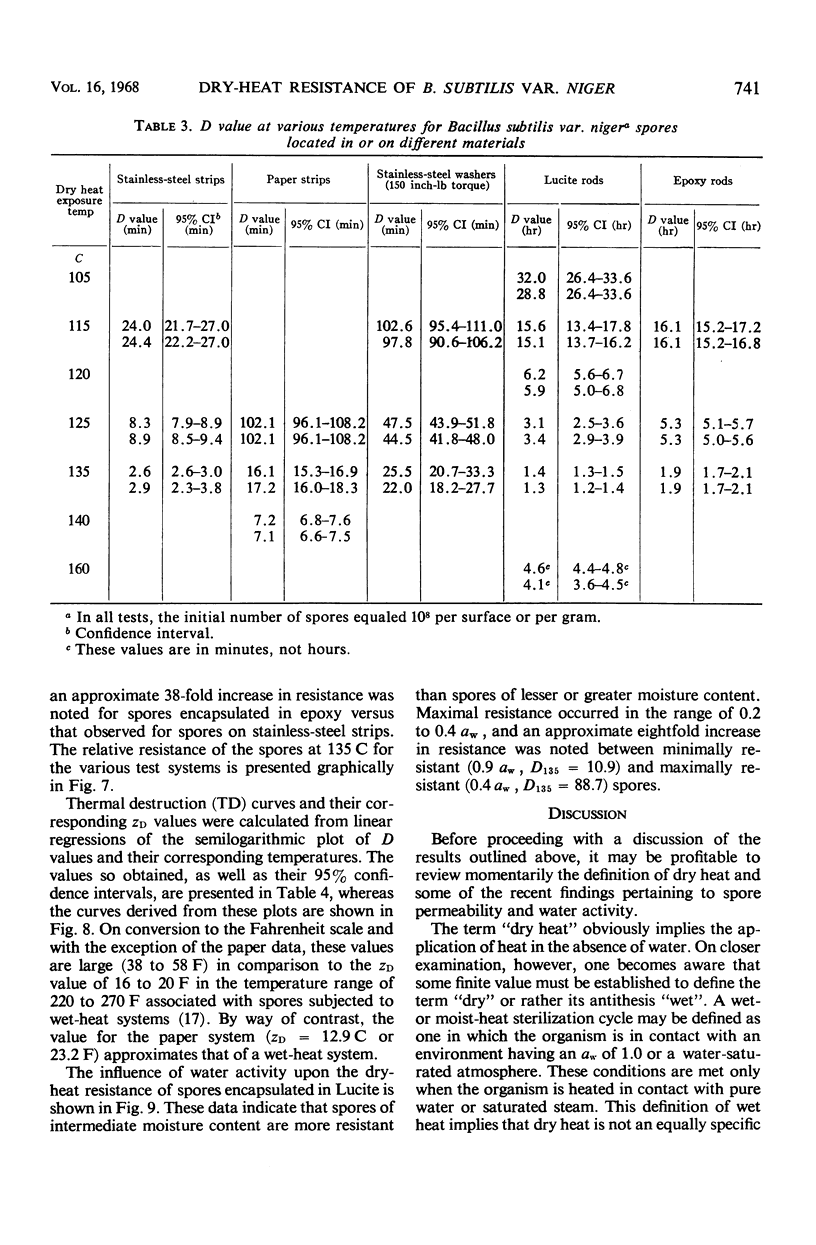
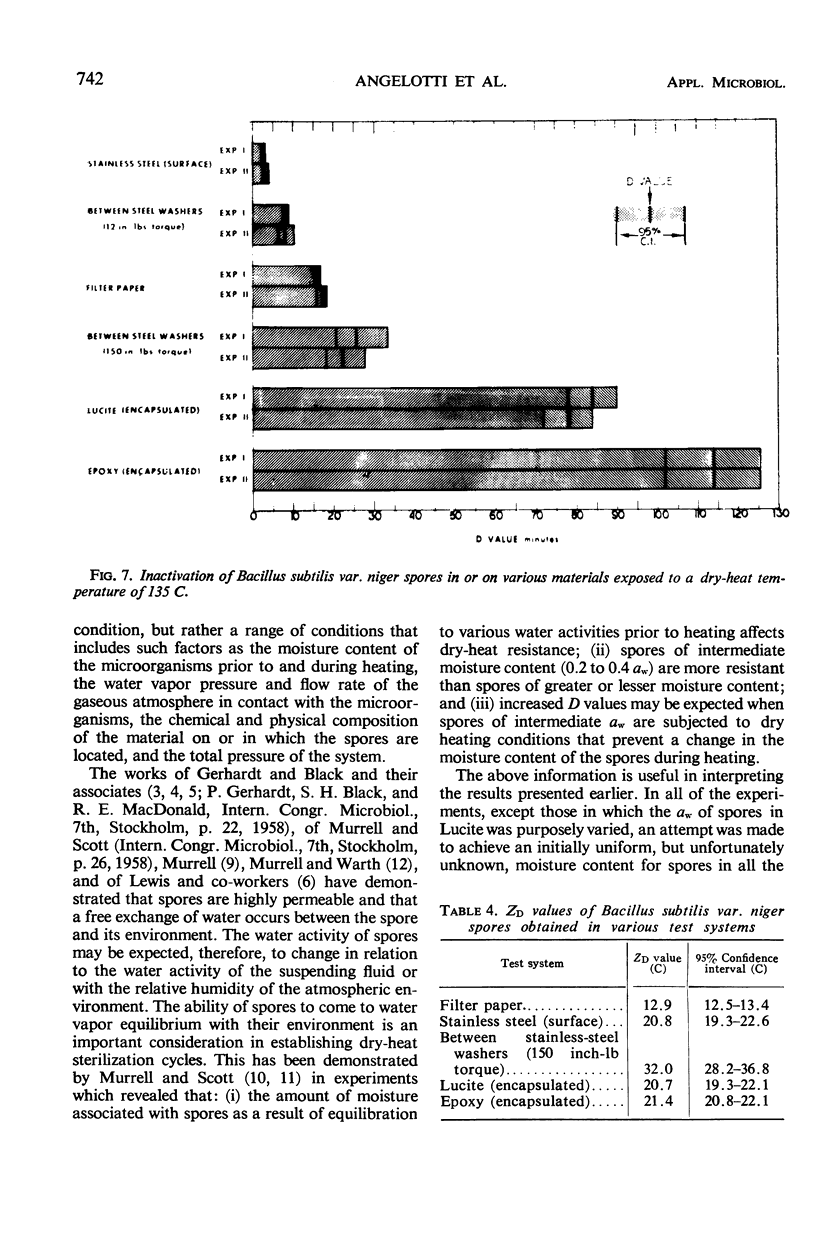

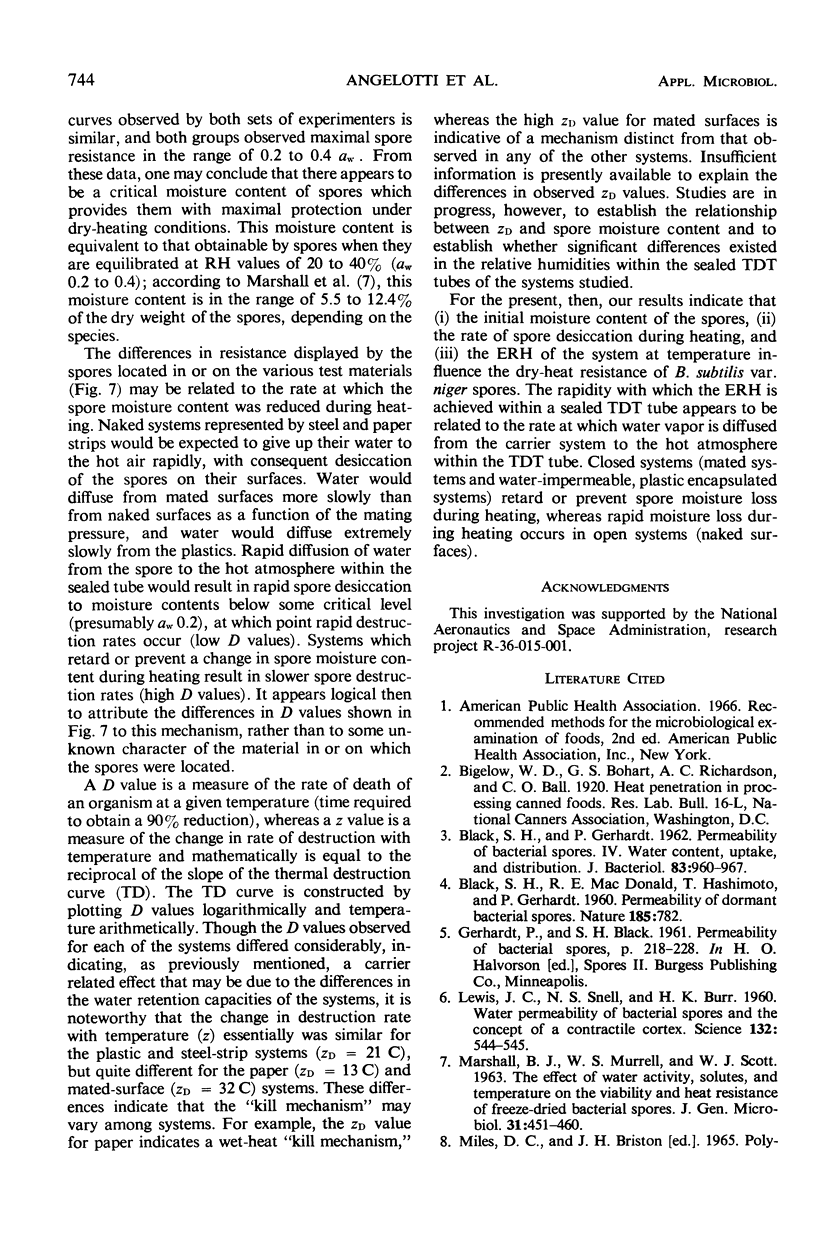
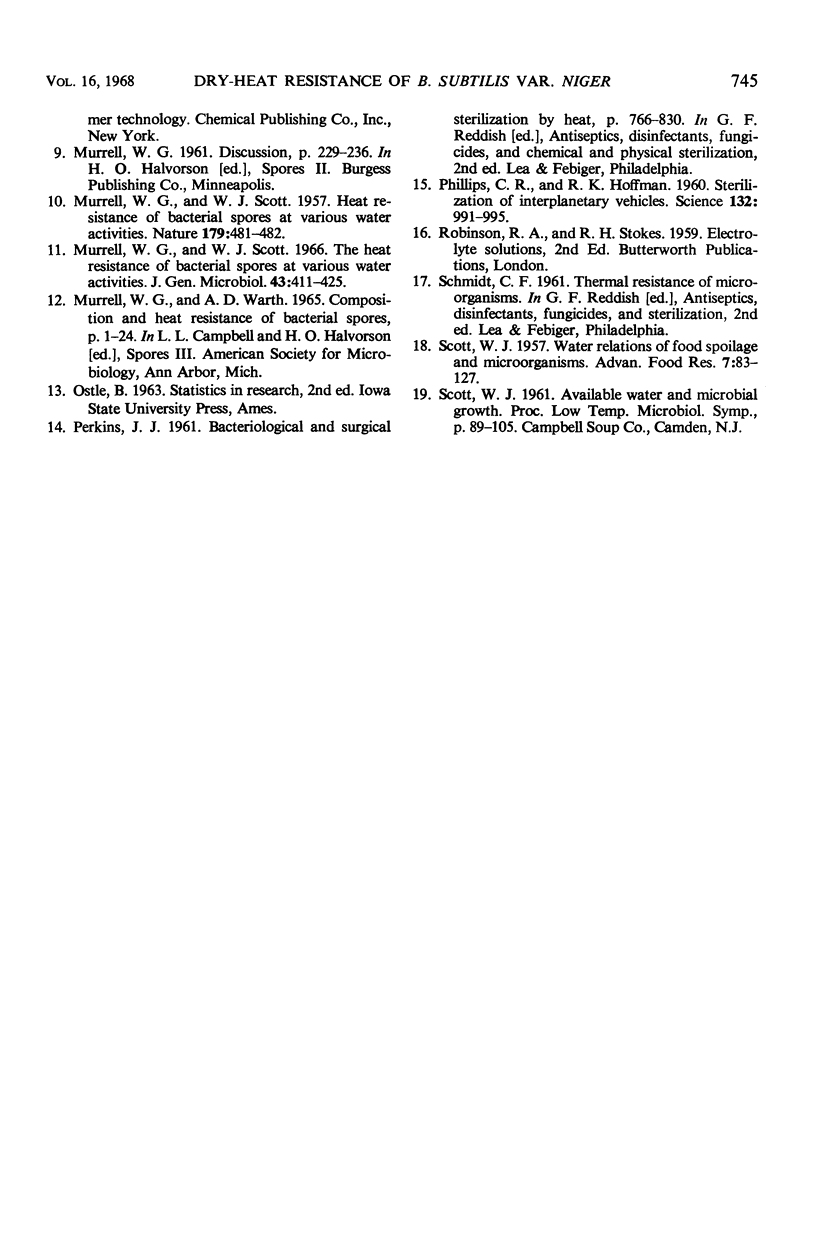
Images in this article
Selected References
These references are in PubMed. This may not be the complete list of references from this article.
- BLACK S. H., GERHARDT P. Permeability of bacterial spores. IV. Water content, uptake, and distribution. J Bacteriol. 1962 May;83:960–967. doi: 10.1128/jb.83.5.960-967.1962. [DOI] [PMC free article] [PubMed] [Google Scholar]
- Lewis J. C., Snell N. S., Burr H. K. Water Permeability of Bacterial Spores and the Concept of a Contractile Cortex. Science. 1960 Aug 26;132(3426):544–545. doi: 10.1126/science.132.3426.544. [DOI] [PubMed] [Google Scholar]
- MURRELL W. G., SCOTT W. J. Heat resistance of bacterial spores at various water activities. Nature. 1957 Mar 2;179(4557):481–482. doi: 10.1038/179481a0. [DOI] [PubMed] [Google Scholar]
- Murrell W. G., Scott W. J. The heat resistance of bacterial spores at various water activities. J Gen Microbiol. 1966 Jun;43(3):411–425. doi: 10.1099/00221287-43-3-411. [DOI] [PubMed] [Google Scholar]
- PHILLIPS C. R., HOFFMAN R. K. Sterilization of interplanetary vehicles. Science. 1960 Oct 14;132(3433):991–995. doi: 10.1126/science.132.3433.991. [DOI] [PubMed] [Google Scholar]



